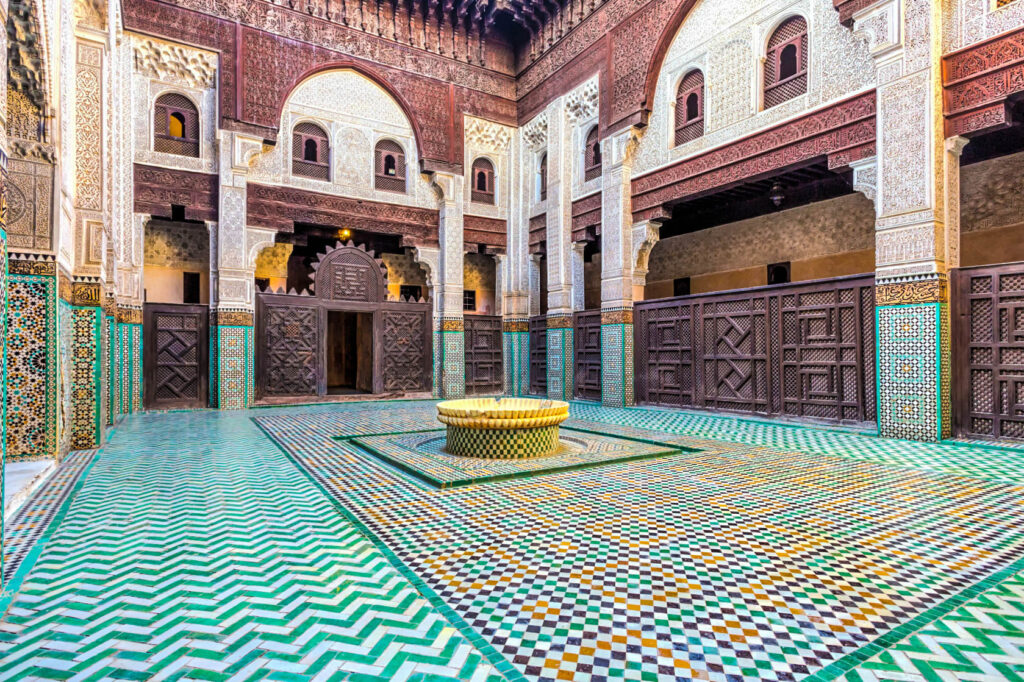
Moroccan Architecture
Moroccan Architecture
Due to its unique location, Morocco has been influenced by many cultures throughout the years. for hundreds of years , the country was formed by the mixture of African tribes from the opposite side of the Sahara , Islamic traditions from Arab neighbors, and European colonizers. All of those influences have created a culture unlike the other and nowhere is that this more clear than within the country’s unique style of architecture .
Today, different design elements are often seen within the buildings throughout Morocco but the strongest influence within the country’s architecture (both within the past and therefore the present) is Islam. Indeed, the precise decoration guidelines of Islam are wont to direct the development and ornamentation of buildings in Morocco for hundreds of years .
In addition to the Islamic influence, Hispano-Moorish architecture (a sort of architecture characteristic of North Africa and therefore the Iberian Peninsula) also took roots in Morocco during the Almoravid dynasty. Today, a mixture of those two particular styles are often found in most buildings throughout the country.
Understanding the good sort of buildings in Morocco and their diverse architectural styles and elements can become overwhelming, so allow us to require you on a journey through a spread of elements.

Design Elements
Morocco is usually described as a rustic of allure, mystery, and wonder and this is often certainly partially thanks to its unique architecture. Despite the country’s sometimes turbulent history, most of its artistic heritage has survived until today.
Design elements of Moroccan architecture even have a robust Islamic influence. These include elaborate geometric patterns, ornamental Islamic calligraphy of Quranic verses, and colorful zellij (a ceramic-tile mosaic). Open courtyards with lavish gardens also can be found at the middle of most buildings: these were constructed as places of privacy and relaxation.
The Hispano-Moorish style also features prominently in Moroccan architecture. Its main design elements include sharp white walls, stucco roofs among the arches, and enormous domes. the sweetness in Moroccan architecture is that these elements can typically be found blended in with Islamic-style buildings like mosques and medersas (Quranic schools).
Different Structures, Different Design
What sets Morocco’s architecture apart isn’t only its exceptional blend of various design elements but also the unique features of every of its traditional buildings. Mosques, riads, souks, ramparts, kasbahs, palaces, and medersas are all differing types of buildings found throughout Morocco: they need different purposes and really different architectural designs. we’ll cover a number of them below.
Mosques are arguably Morocco’s most vital structures. In every city, village, or town – regardless of how small – you’ll find a minimum of one mosque with a tall minaret towering over the town . With walls and fountains covered in green and white zellij and a beautifully adorned mihrab (a niche indicating the direction to Mecca) in stucco and marble, it’s no wonder visitors find Moroccan mosques to be the epitome of Moroccan architecture. for a few of the foremost exquisite samples of Moroccan mosques, visit the spiritual city of Fez, particularly the Al-Qarawiyyin Mosque. confine mind only the Hassan II Mosque in Casablanca and Tin Mal Mosque within the rural High Atlas Mountains are open for non-Muslims to tour inside the buildings.
Riads
Traditional homes and palaces in Morocco are called riads. As private residences, they were built with seclusion in mind. they’re focused inward with a courtyard within the center, which allows for both family privacy and protection from Moroccan weather. All rooms hospitable this courtyard and have windows only towards this central space. Courtyards are often decorated with a fountain and orange or lemon trees. counting on the family’s wealth, the riad could be decorated with magnificent zellij and stucco work. Many ancient riads are renovated recently in Marrakesh and Essaouira and many are repurposed today as hotels and restaurants.
Kasbahs
A type of medina, the kasbah may be a fortified city built for defensive purposes. Besides their extraordinary size, kasbahs are quite impressive and were typically inbuilt harmony with their surroundings. the huge outer walls and every one the buildings inside easily blend into the background with their tan-colored exterior. the straightforward construction materials used enabled the interiors to remain warm in winter and funky in summer. The Kasbah des Udayas in Rabat especially is sort of a stimulating sight to behold.
Medersas
More than just schools of spiritual teachings, merdersas were true thriving centers of the studies of law, philosophy, and astrology. Their architectural design is exclusive therein it portrays an excellent disparity: in contrast with the extremely small and straightforward wooden dorm rooms of the scholars stood an incredibly adorned gate and a huge central courtyard lined with magnificently decorated arches with detailed stucco work. The mosque enclosed within the towering school walls would even be exquisitely decorated in sweeping Islamic calligraphy and sophisticated geometrical motifs on shining green and white zellij. it’s difficult to understand the incredible décor contrast in these schools so confirm you visit Medersa Bou Inania in Fez for one among the country’s finest examples.